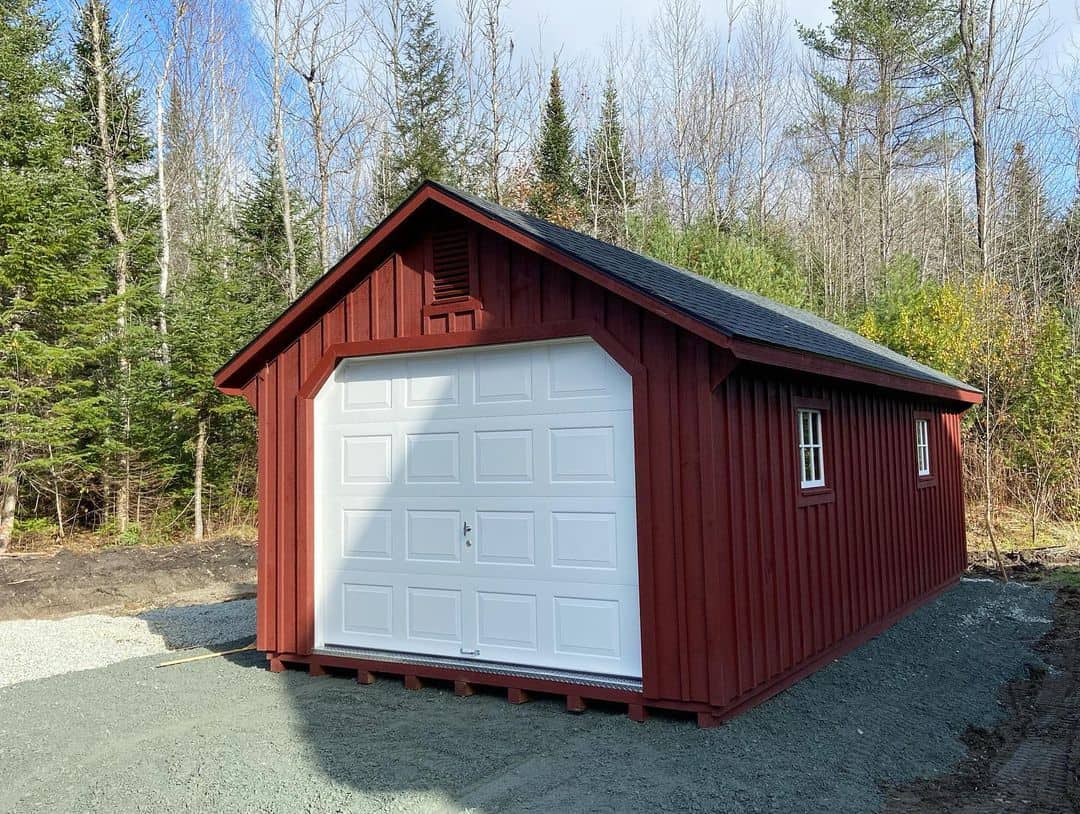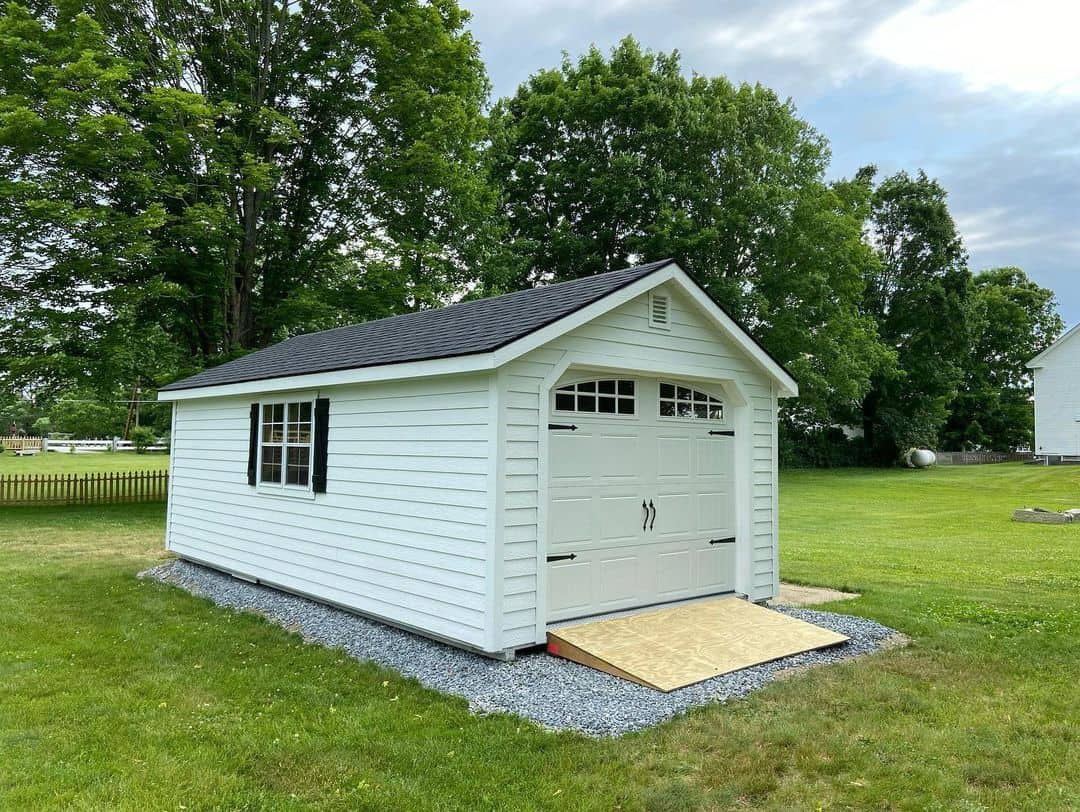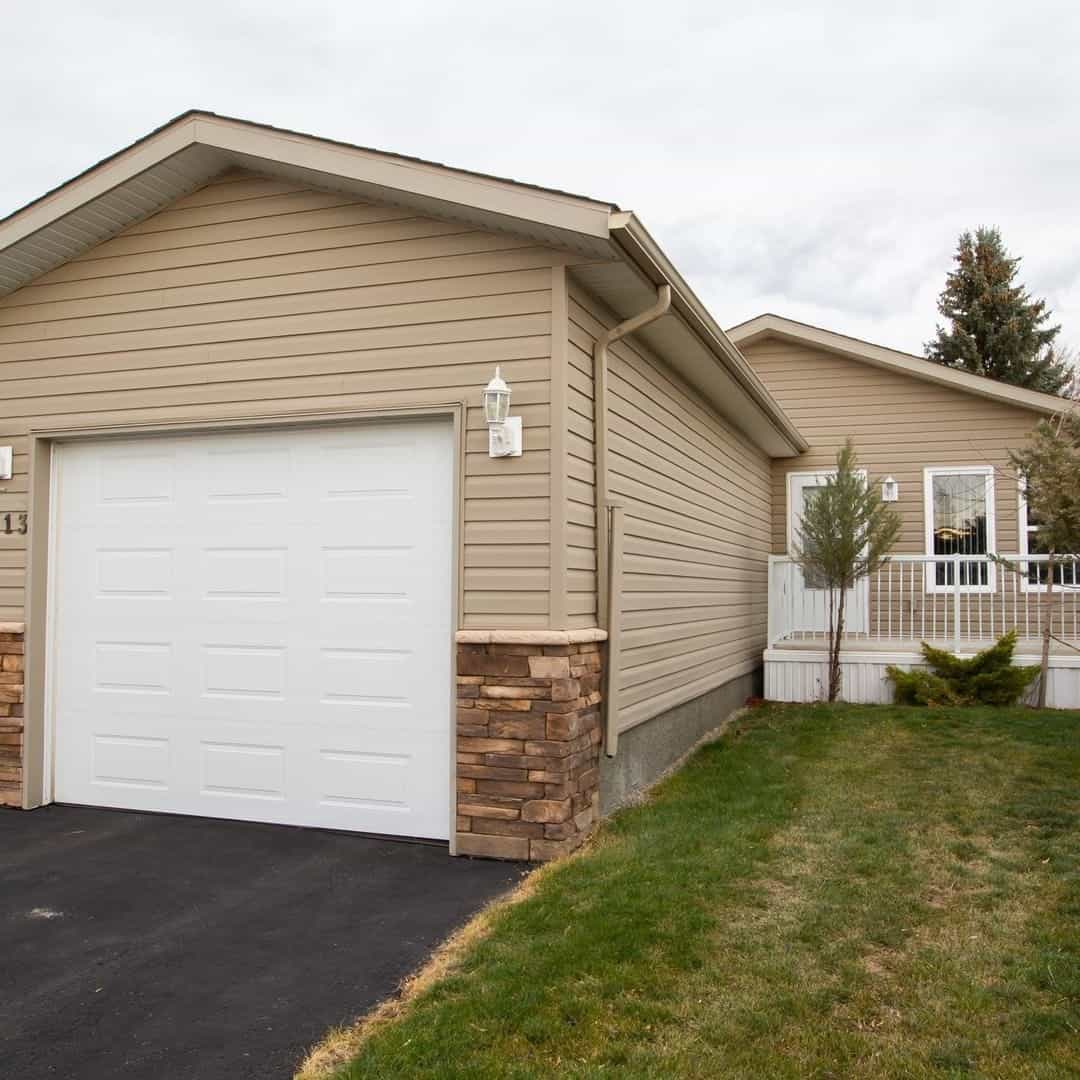Are you planning to materialize your dream garage? Before you get into the process, it’s a must to know the nuts and bolts, which include the size of your soon-to-be garage area. And if you want to build a single-car garage, determine the scope of the area so you can plan your budget in advance.
To help you out, we will discuss the most appropriate single-car garage dimensions to provide you with an idea of the things you can do with the given space. More so, we will cover some tips on how to make your garage creation more efficient.
Learning the importance of having a garage in your home
From keeping your car safe to providing additional space, a garage is definitely a pivotal part of most homes. Having a garage ensures that your vehicle is secured from unfortunate scratches, dents, or damages caused by exterior elements like vandalism or even theft.
The garage also keeps your car from extreme temperatures like windstorms, snowstorms, or heat waves. These hazardous weathers largely affect the exterior of the vehicle, that’s why it’s highly recommended that you store your car inside a garage to prevent any unwanted impairment.
More so, a car garage is very helpful in thwarting rust accumulation and maintaining your vehicle in tip-top condition. So, if you’re ready to take this challenge, let’s start with identifying the average size of a garage that fits one car.
Identifying the different categories of car
If you only plan to have a garage for one car, the average size largely depends on the size of the vehicle. It should be known that there are different car classifications that vary according to their dimensions. These include hatchbacks, sedans, MPVs, and SUVs, among others.
Likewise, some are further categorized into compact cars or sports cars. There are also others that may be part of the gas-powered or smart car category.
Furthermore, you also need to consider that there are other vehicle types aside from cars. These trucks, trailers, and motorcycles. To have a better grasp of the sizes, let’s discuss the average dimension of the main car types.
1. Mini cars (Hatchback)
In general, small cars take up at least 10 ft long and 6 ft wide. Their average height is around 5.5 ft tall. Since these are smaller in size, you won’t have a hard time plotting your garage.
2. Mid-sized cars (Sedan)
If you’ve got a sedan, the normal size is 14 ft long and 6.5 ft wide. The minimum dimensions are quite similar to mini cars, especially with the width. They largely differ in the length of the vehicle.

3. SUVs and MPVs
SUVs and MPVs, which are bigger cars, stand around 16.5 to 17 ft long and 7 ft wide. There are also SUVs that are massive in terms of height because of their wheel size, so that’s something that you need to consider. On the other hand, MPVs are slightly bigger than SUVs.
4. Trucks
Trucks are obviously the biggest among all the above-mentioned vehicles. Typically, they are 17 to 20 ft long and 7 ft wide. Depending on the key functions of the truck, like having lift kits, then the height would significantly vary.
Determining the standard garage size for single-car
Standard garages for small cars are around 10 ft by 18 ft with an area size of at least 240 to 384 sq. ft. But if you want extra space, 14 ft by 22 ft would be an ideal choice. Meanwhile, for big cars like SUVs and MPVs, a single-car garage size would be 16 ft by 24 ft, leaving enough room inside the garage.
Consequently, 2-car garage dimensions normally come with an 18 ft by 20 ft size, although you can add an extra dimension in accordance with the car type. Always remember that having enough space is crucial in building a car garage to provide efficient clearance for your car.
And of course, there are other factors that affect the area of your garage. These will be further discussed below, together with some relevant tips.
Planning your garage
Before you kick off with the garage creation, you need to take into account some aspects. Aside from the car, here are essential parts of a garage that may impact your decisions:
1. Garage door
Garage doors are very important as they provide security to your car and other belongings inside. In choosing the garage door, you should go through the variety of materials and styles available in the market.
The size is also imperative as this influence the cost of material and even labor. So, determine the garage door dimensions in advance and make sure that it fits perfectly into the garage. However, there are some who prefer a wide garage door to create a roomier interior.
Once you have identified the garage door widths and lengths, the next step would be the number of doors. This aspect is significantly reliant on your preferences. You may either choose a single door or a double door.
Likewise, many homeowners install a garage door opener to easily control the opening and closing of the garage door. This is such a great investment as the equipment often comes with a motion sensor and a backup light.

2. Garage floor
Moving forward, garage doors take up a section of your decision-making as well. Since the garage is considered the home of your car, picking the correct type of flooring is crucial. Why? It’s because you need to factor in the regular friction between the car and the floor.
The best option among expert builders is polished concrete flooring. This type of flooring is quite popular because it encompasses durability and style. Other recommended choices include vinyl, rubber tile, and stone flooring.
And if you want the flooring to endure external elements like cracks, stains, and damages, it’s suggested to add flooring coating. Some of the most commendable garage floor protections are Polyaspartic coating, epoxy, concrete resurfacer, and floor sealer.
You may also incorporate stains and paint into the flooring to add character and upgrade the garage depth. If you want to save money, try to do this on your own.
3. Layout and design
Lastly, the layout of the garage is highly dependent on how you want to materialize your home improvement plans. For instance, some prefer an attached garage while others opt for a detached garage.
There are also other people who build a two-story garage for additional storage. A two-story structure is highly commendable if you’re planning to get additional vehicles in the near future.
You can even add a workspace inside the garage to maximize the space. Having your own workshop is definitely fascinating, especially if you love DIY stuff. On the other hand, you may install extra storage space for your tools and equipment as well.
Since it’s very important to plot an efficient and perfect garage space, you need to be thorough with the planning. If you are not inclined with doing the design and layout, don’t worry because you can hire a contractor for the job.
Getting started with the car garage building
If you have taken into account the key elements mentioned above, it’s time to move to the preparations. Here are some important things to
1. Accomplish government permits.
Each state has different laws about building a new garage. These zoning laws may require you to accomplish certain permits and fees before you are allowed to start the construction process. Therefore, it’s crucial that you follow the regulations set by your state to avoid violations and hefty fines.

2. Budget your finances properly.
Building a garage takes up a certain section of your finances. It may even be a huge amount, depending on the materials, foundation, finishes, and tools inside. Thus, you need to be wary about your expenses and know the cost to build a garage.
Accordingly, the standard one-car garage starts from $10,000 and $27,000, with an average price range of $24,000. Meanwhile, three-car garages would normally cost up to $50,000. And if you pick more expensive materials and install more equipment, then you should prepare your budget in advance.
3. Materialize the garage design.
With the help of the experts, you may now commence with the building of the garage. These people can provide you with insights about what materials are the best for the flooring or what things to be done during the construction.
You may also ask them about the driveway design, which is actually connected to the garage. To give you an idea, a single-car garage takes up at least 10 ft to 14 ft wide for the driveway. Two-car garages, on contrary, may need 20 ft to 24 ft.
And since you will be capitalizing on someone’s knowledge, then you’ll be paying for the labor costs. So, make sure to include the labor in your budget.
Conclusion
Constructing a car garage is a major home improvement that needs your utmost attention. Therefore, you need to understand the technicalities, which encompass the garage dimensions, materials, and budget. So, be ready to take on this challenge and make your garage dreams into reality!
